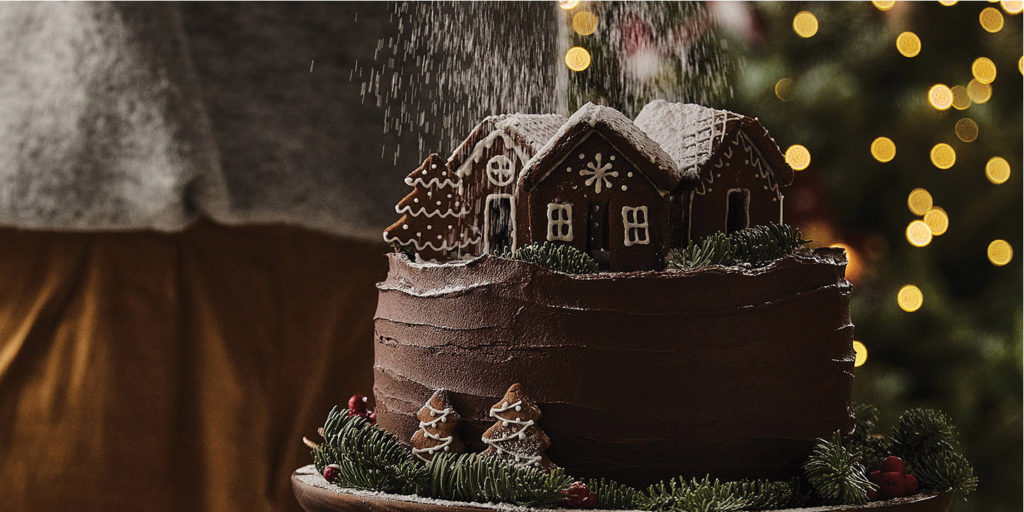
I love Christmas. I love the whole atmosphere. The lights, the decorations, the tree… and of course food.
I grow up in Poland, and we have our own, special traditions, which is you can read about in my previous posts. But, if you are anything like me, you are a curious soul and want to know how Christmas looks in other parts of the world. I have decided, to start with the most important. Dessert – of course!!!! Come with me on a journey to various places on the globe to see what’s amazing sweets are served there during this holiday.
Turrón in Spain
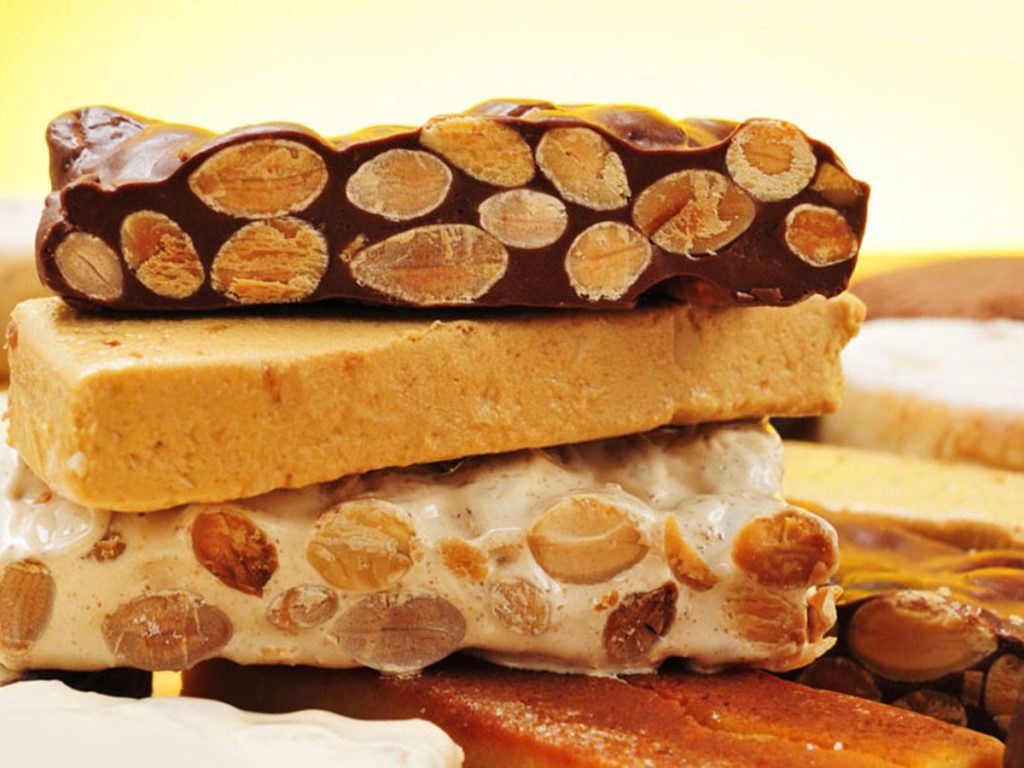
Nougat. It is a favorite Christmas confectionary throughout this European culture. It is generally made of honey, sugar, and egg whites, mixed with toasted almonds, pine nuts, or hazelnuts. You can get it hard and crunch or soft and chewy, depending on your preference. Either way, it is served in small bite-size pieces, perfect for popping in your mouth while you celebrate!
Bûche de Noël in France
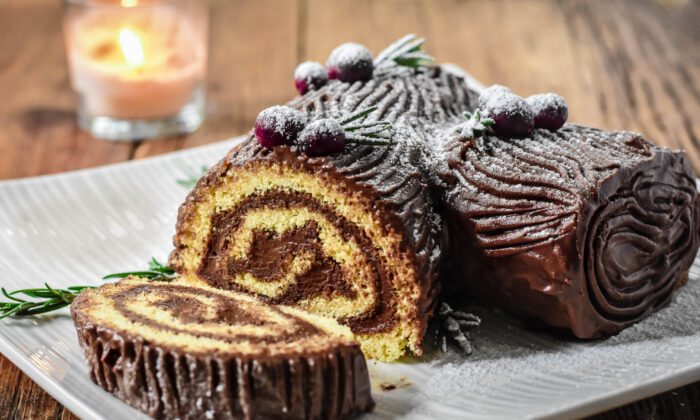
This dessert is a nod to the ancient European tradition of burning a Yule log on a hearth to mark the winter solstice, and later on, the tradition became a part of Christmas celebrations. The Yule holiday was celebrated with a special piece of wood, burning all night, and this cake resembles that exactly. Sponge cake, rolled up into Swiss roll and lay flat. As for the cake itself, the recipe’s origin seems to date back to the 19th century. The cream-filled cake resembles a cut branch of wood, with its chocolate frosting symbolizing bark and edible decorations reflecting leaves, holly, or other parts of nature.
Natilla in Colombia
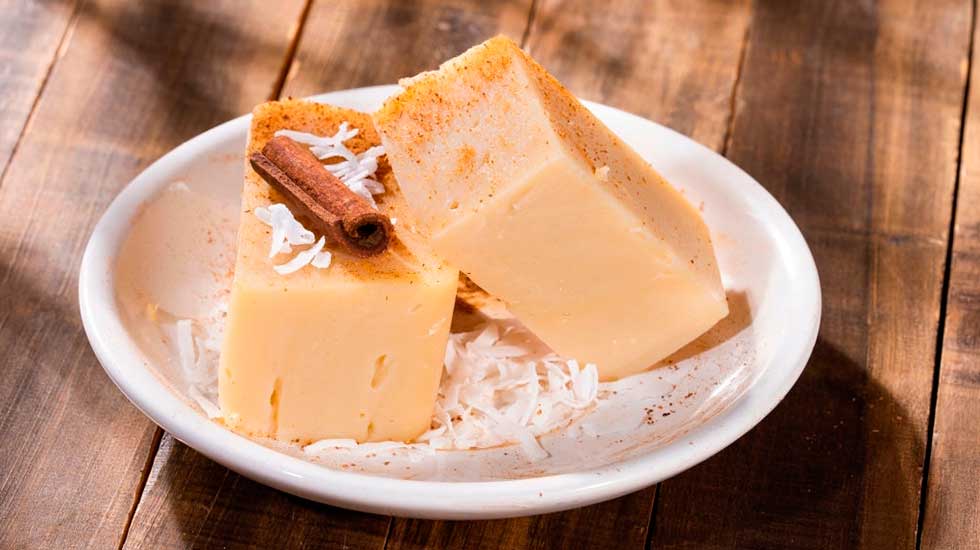
Colombians get into the spirit of the season with Natilla. This custard is eaten with bunuelos and manjar blanco (fried dough balls and pastry filling). It is slightly similar to flan, made of milk, brown sugar, and cinnamon sticks. Some recipes also call for shaved coconut or raisins to add a dash of extra flavor.
Panettone in Italy
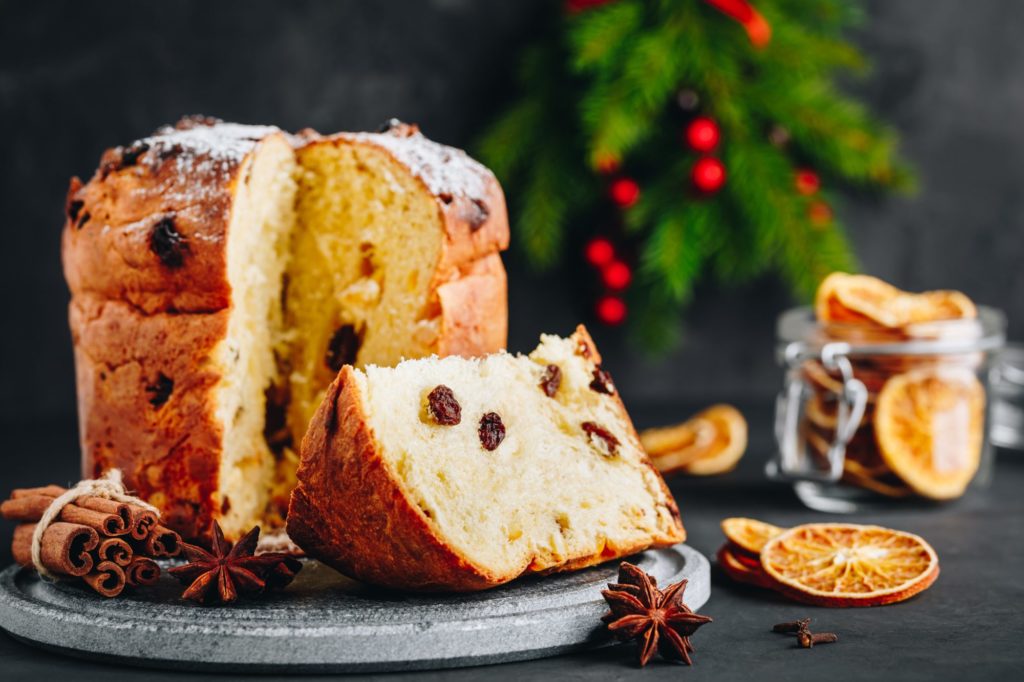
As one of Italy’s most recognized food panettone originated in Milan, but its full origin is unclear. A popular legend says that in the 15th century, a lavish Christmas cake was to be served at a Christmas Eve feast for the powerful Duke of Milano, Ludovico il Moro. The cake was burnt and, with no time to spare, the desperate pastry chef turned to his young cook, a boy named Toni, to use his pillow-like loaf of bread and added in citrus and raisins. The duke loved the dessert and asked what was its name; he was told it was “Pan del Toni.” It conquered the hearts of all Italians, and not only.
Šakotis in Lithuania
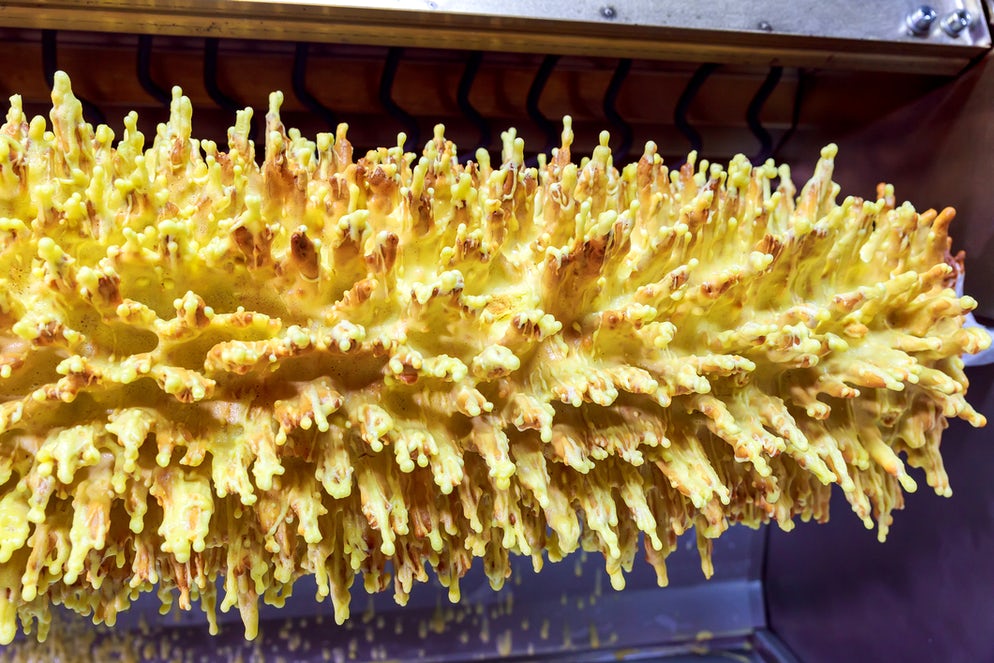
The unique tree cake, Šakotis, is invariably found on the table during special occasions in Lithuania. No wedding, baptism, anniversary, Easter, or Christmas is celebrated without it. It is also a popular souvenir. It is a cake made of butter, eggs, flour, sugar, and cream, cooked on a rotating spit in an oven or over an open fire. Šakotis is an exceptional cake that would be hard to make at home since it requires special equipment and a great deal of effort. Its name means “branched tree” or “tree with many branches” due to its distinctive shape (it is often conical, like a pine tree, and with the drips as branches). Bakeries that make šakotis keep their recipe a closely guarded secret. Some sources claim šakotis was first baked in Europe as early as the 15th century. The cake became popular during the Polish-Lithuanian Commonwealth (1569–1791). Its origins are attributed to either the Italian Queen Bona Sforza of Poland or the Baltic tribe of Yotvingians.
Kutia in Belarus
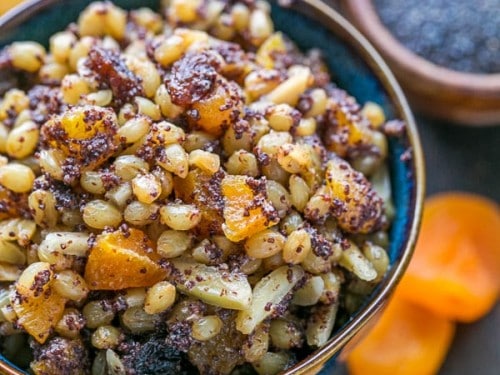
At Christmas time, Belarusian enjoy their Kutia, a sweet grain pudding, traditionally also served in Ukraine, Russia, and some parts of Poland. Kutia is often the first dish in the traditional twelve-dish Christmas Eve supper (also known as Svyata Vecherya). It is rarely served at other times of the year. Traditionally it was made of wheat berries, poppy seeds, honey, various nuts, dried fruit, and raisins. In many recipes, milk or cream is also used. In some Slavic countries, rice is the main ingredient.
Christstollen In Germany
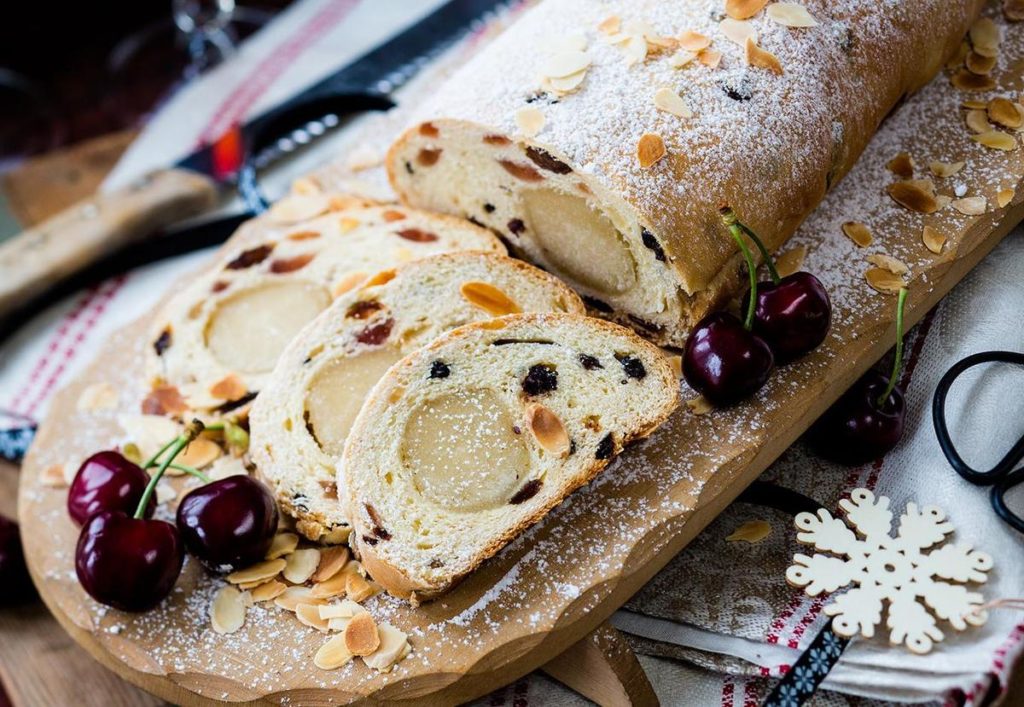
Made in Dresden, the recipe for this raisin-loaded cake has been passed down for centuries. Its preparation starts with a heavy yeast dough that requires ingredients like butter, sweet and bitter almonds, candied orange, and lemon peel. As for its raisins, they get added in right before the cake goes into the oven to keep them firm. Another traditional ingredient is a thick roll of Marzipan, which is run through the whole cake. When finished baking, the Christstollen is completed with a covering of butter and sugar. Each slice is filled to the brim with raisins, candied fruits, and a large circle of sweet marzipan.
Kransekake in Norway
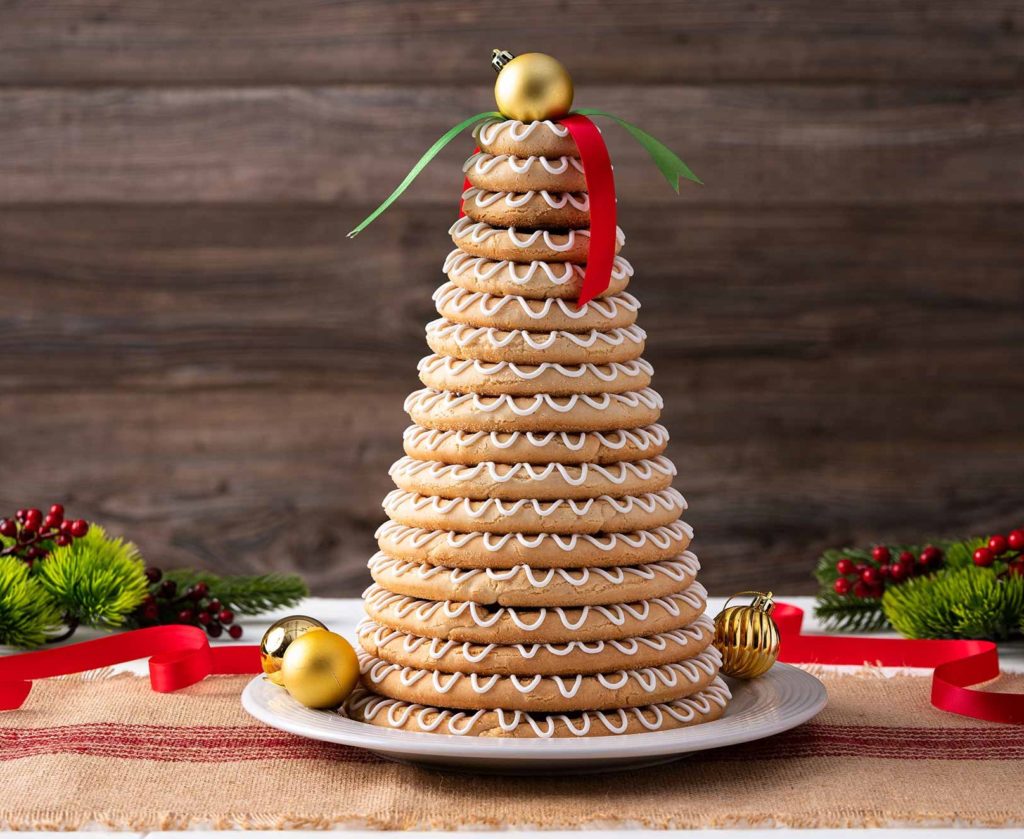
This impressive Norwegian cake forms an unusual showpiece at Christmas celebrations. The Kransekake resembles a tower – which inspired yet another name, Tower Cake (Tårnkake). It is made from almonds, icing sugar, and egg whites. The dough is a little coarser than marzipan and sometimes has specs of almond skin as a “rustic” feature. Kransekake is made by making rings in varied sizes, which are then stacked into a pyramid shape ( with the largest on the bottom). It is held together by icing between the layers. Usual decorations include tinsel, bonbons, Lollies, sparklers, and small Norwegian flags. In Norway, a Christmas without Kransekake just is not the same.
Bolo Rei in Portugal
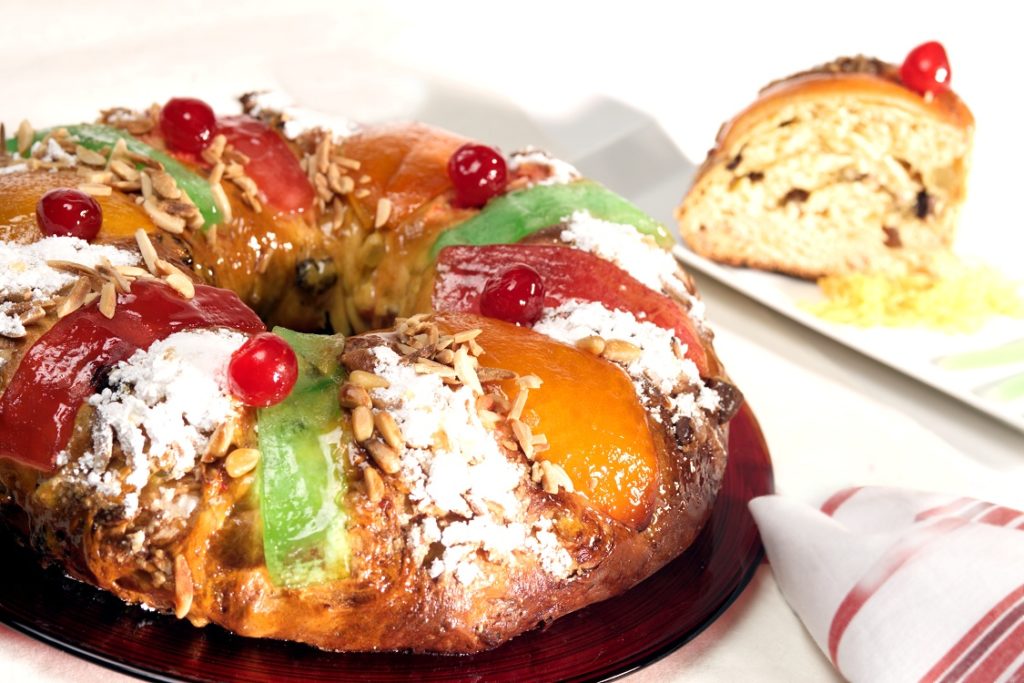
The King‘s Cake – which originated in France and only arrived in Portugal during the mid-nineteenth century. It is traditionally eaten on the 25th of December for the Nativity and the 6th of January for the Epiphany. The bread-like cake is round with a hole in the middle like a crown and decorated with candied fruits and nuts to symbolize the gifts offered by the Magi. Inside the Bolo Rei are nuts, candied, and dried fruits. There is also a fava bean and according to one legend, a baker added a fava bean to the cake to settle a dispute as to which of the wise men gave the gifts to baby Jesus. The Magi who found the fava, in his slice of cake, was then selected. A family tradition in Portugal is that whoever has the slice with the fava bean has to buy or bake next year’s cake!
Christmas cake in Japan
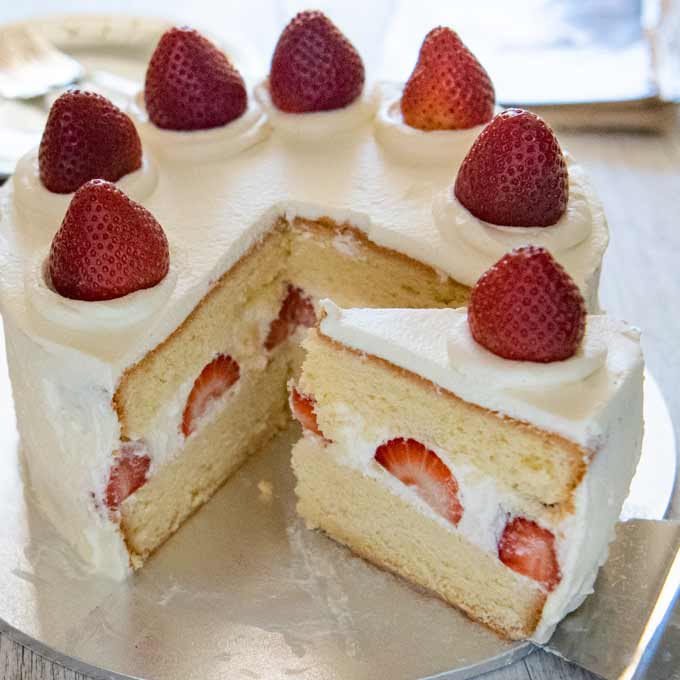
Christmas in Japan is more about a time to share and spread happiness than it is a religious celebration. Christmas Eve is considered a romantic day. Couples will spend the day together and enjoy seeing the Christmas lights around the city and go to restaurants for a romantic meal. Go figure! If you want to enjoy a Japanese-style Christmas, then you cannot go wrong with a Japanese Christmas cake. Unlike the traditional, European fruit cakes, this is usually a sponge cake with whipped cream and decorated with strawberries.
Eggnog in the USA
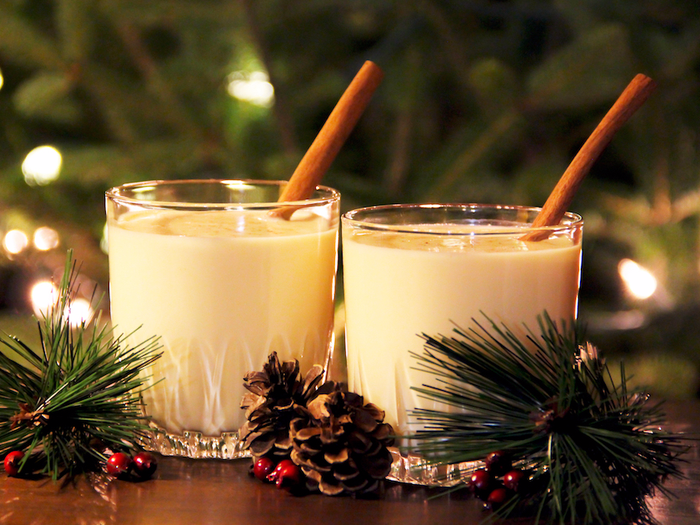
There is an abundance of Christmas treats served throughout the US. You can count lots of different varieties of cookies, lots of pies and cakes, and so much more. But almost everyone looks holds out for Eggnog. This nectar of the gods is only sold during the holiday season. It is made of milk, cream, whipped eggs, sugar, and spices. Adult versions also feature a stiff shot of brandy, rum, or bourbon.
Christmas Trifle in Ireland
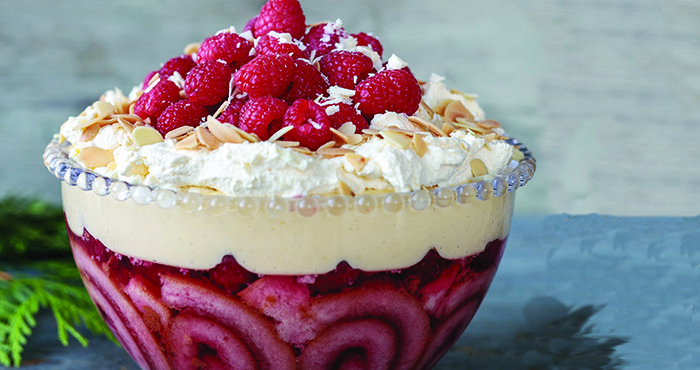
Irish people eat a dessert called trifle during Christmas. Always presented in a tall glass dish, so you can see all of the layers: layered fruit, cream, sponge cake, and jelly. the choice of fruits and flavor composition is completely up to you.
Kletzenbrot in Austria
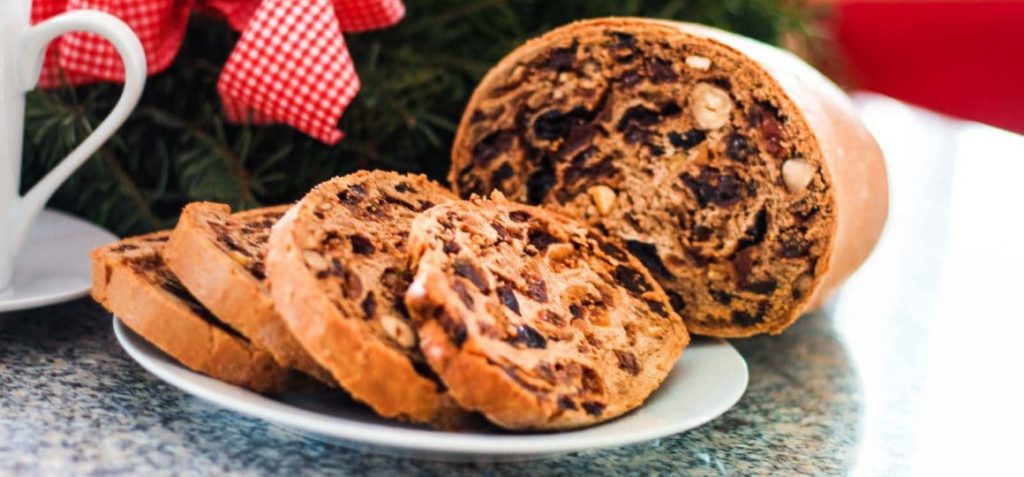
Christmas Fruit Bread – The Kletzenbrot is a heavy and moist rye flour fruit bread prepared during Christmas extremely popular in Austria and southern Germany. This bread is particularly connected with the Austrian state of Tyrol where it cannot be missing from Christmas tables and is customarily eaten after the midnight mass. The Kletzenbrot is one of the oldest Christmas confections and the tradition of baking this sweet fruit bread during advent time can be traced back to the Middle Ages. Traditionally, this festive bread has been made with whole dried pears (called Kletzen in Austria), from which it derives its name. Nowadays, this bread can be prepared with a variety of dried fruits (apples, figs, prunes, and raisins), also contain a variety of nuts and warm spices, such as cloves, cinnamon, nutmeg, aniseed, and fennel. The bread has a crispy crust, and when cut, the loaf releases a warm and fruity aroma of dried fruit, raisins, and spices.
Rabanadas in Brazil
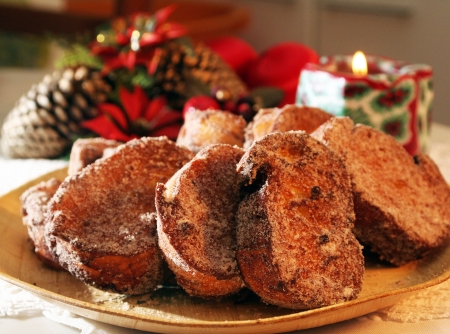
In Brazil, the main Christmas meal is served on Christmas Eve, as in many parts of Europe. It is known in Portuguese as “ Ceia de Natal). The most traditional dessert is one of Portuguese origin called Rabanadas. The word Rabanadas means “gust of wind” or “a blow with the tail.” Although the name might be unfamiliar, the dessert is certainly well-known to English speakers under a different name, and they associate this dish with another time of day – breakfast, to be precise. For rabanada is nothing less than what we English speakers call French toast.
Bibingka in Philippines
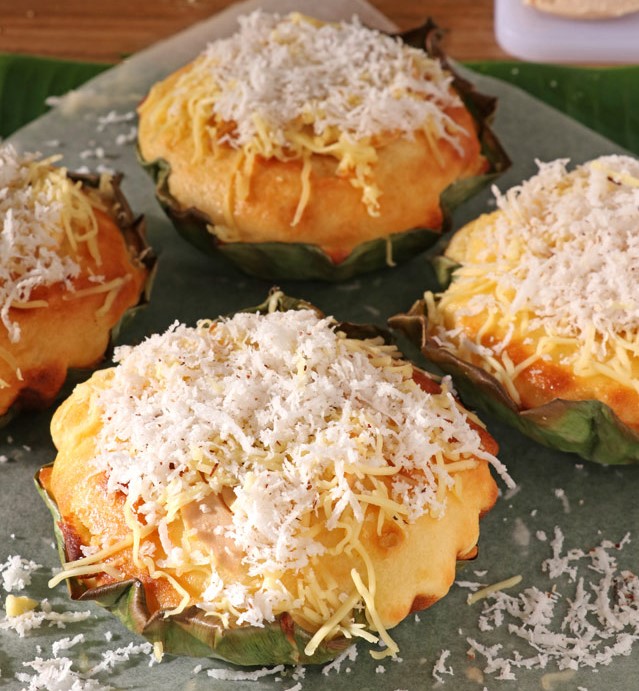
Coconut Cake prepared for Christmas. Bibingka is a rice flour cake made with coconut milk and eggs and is traditionally cooked in clay pot ovens that are lined with banana leaves—which give it additional flavor—over preheated coals. This soft, sweet, and spongy cake gets dressed with toppings that include grated coconut, cheese, butter, or even duck eggs. Bibingka is traditionally eaten around Simbang Gabi, a series of nine dawn masses leading up to Christmas Eve. After the end of service during this novena, churchgoers can purchase this delicacy from the merchants selling them outside.
Joulutorttu in Finland
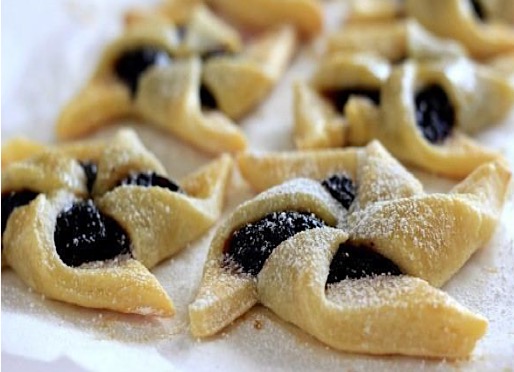
At Christmas time Finnish mums and dads always bake their traditional Joulutorttu. These pastries are windmill-shaped tarts with a prune jam filling. The name of Joulutorttu is translated as Christmas tart (“torttu” for tart). It is also known as “Tähtitorttu” (Star Tart). Joulutorttu is traditionally made with quark cheese and butter pastry and filled with homemade jam. Joulutorttu’s are mostly made in Finland but also in Sweden.
Pan de Pascua in Chile
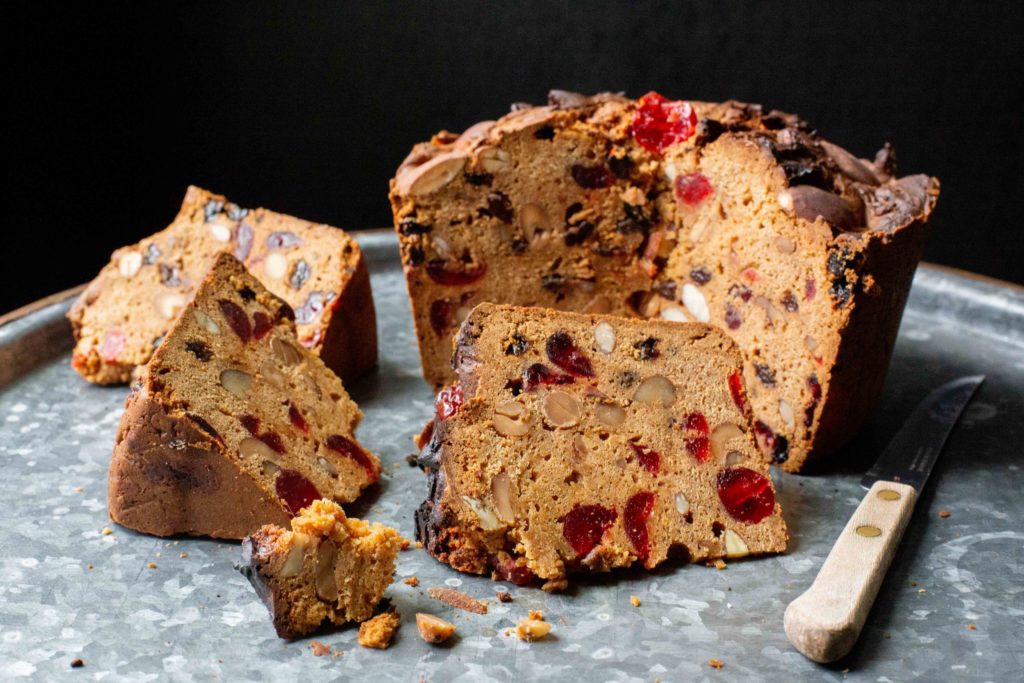
Known also as Dulce De Leche Fruitcake. It is slightly misleading, that’s name can also refer to Easter in Spanish. Nevertheless, this Chilean fruitcake is a Christmas staple. Possibly having come from Italian or German immigrants introducing their holiday desserts to Peru, pan de Pascua is a heavy spice cake that gets its flavor from rum alongside cinnamon, nutmeg, and cloves. Usually, a slice is enjoyed with another holiday favorite—a drink called “Cola de Mono,” meaning “Monkey’s Tail,” This is a Chilean version of coffee eggnog with a little extra addition.
Marens Kornflex kokur in Iceland
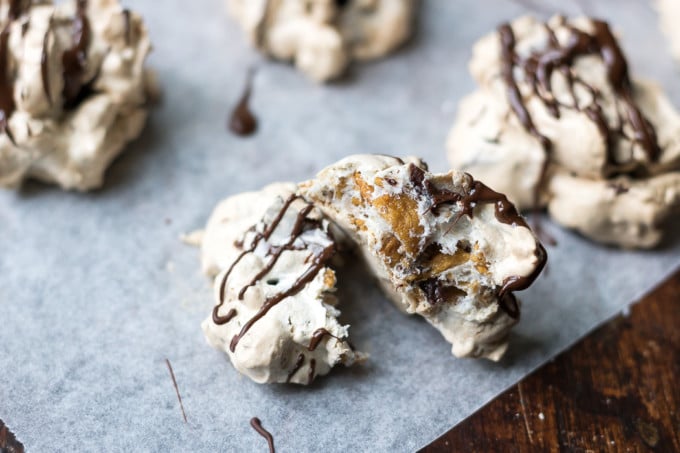
Those Meringue cookies are a Christmas staple in every home. Airy and delicate meringue envelops the crunchy cornflakes and rich chunks of dark chocolate. As with most meringues, the outside has to be dry and delicate, while the inside of the meringue turns marshmallowy and gooey. They are like little mountains of festive deliciousness. You only need five ingredients and 15 minutes for Icelandic Christmas Cookies!
Pepparkakor in Sweden

These thin, crispy, ginger-spiced cookies are a Christmas tradition in Sweden. They are usually cut into heart, flower, or star shapes, but around Christmastime, they are also found shaped like the Swedish Christmas goat. They are extremely thin (approximately one-eighth”) with a smooth finish. Pepparkakor is usually eaten around St. Lucia’s Day on December 13, a celebration of St. Lucia, the martyr who brought food and aid to Christians hiding in catacombs, lighting her way with a wreath of candles on her head. The cookies can also be used to decorate Christmas trees.
Kulkuls in Goa, India
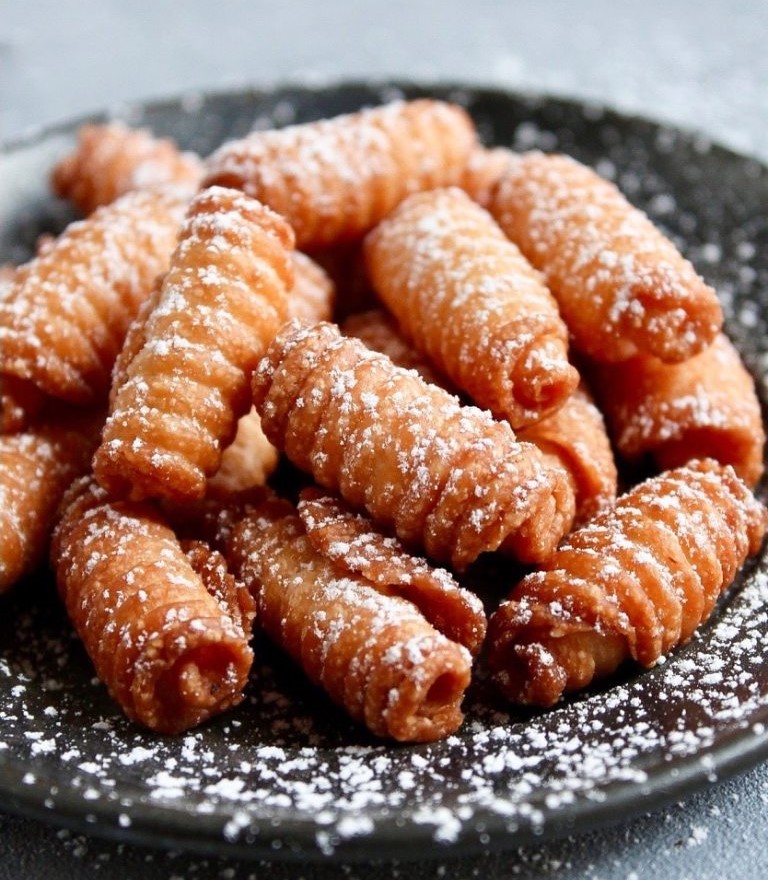
Kalkal or kul is a traditional, deep-fried, Goan pastry shaped into small curls. It is traditionally made during Christmas in India! These little curls are crispy, flaky, and melt-in-the-mouth, and just delicious! They are also known as “kidyo” in Konkannim, perhaps because they look a lot like worms. That does not sound appetizing, but trust me, it is very addictive once you start munching on them. After all, what is not to love about carbs, fat, and sugar!
Christmas cake in Jamaica
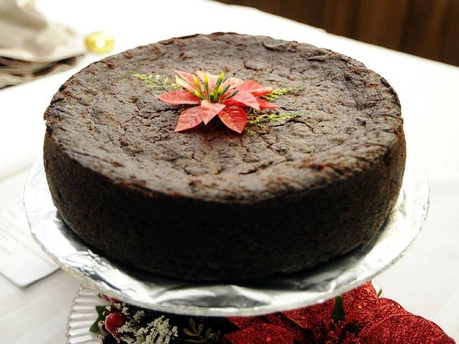
Also known under the name of black cake or rum cake. This Christmas dessert is prepared differently in different households. Overall, it is made with dried fruits such as prunes, raisins, and cherries that are soaked in rum and port or red wine for a good amount of time. It also incorporates vanilla, nutmeg, or allspice and is often served with a glass of sorrel, a hibiscus drink.
Christmas Pudding in the United Kingdom
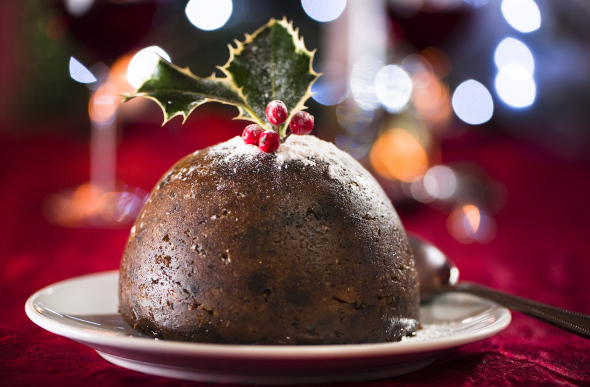
This classic British dessert originated in Medieval England as a porridge called “frumenty.” Over time, this thick mass of a bake would include bread, dried fruits such as prunes, and spices. It became the dish we know today during England’s Victorian era, where it would go from being boiled in a cloth to getting shaped in a mold and being given the name Christmas Pudding in a recipe by 19th-century cookbook author Eliza Acton. Christmas pudding is also part of a centuries-old custom known as “Stir-up Sunday.” This tradition, which falls on the last Sunday before Advent, promotes spending some serious time in the kitchen to prepare for the Christmas feast.
Makowiec in Poland
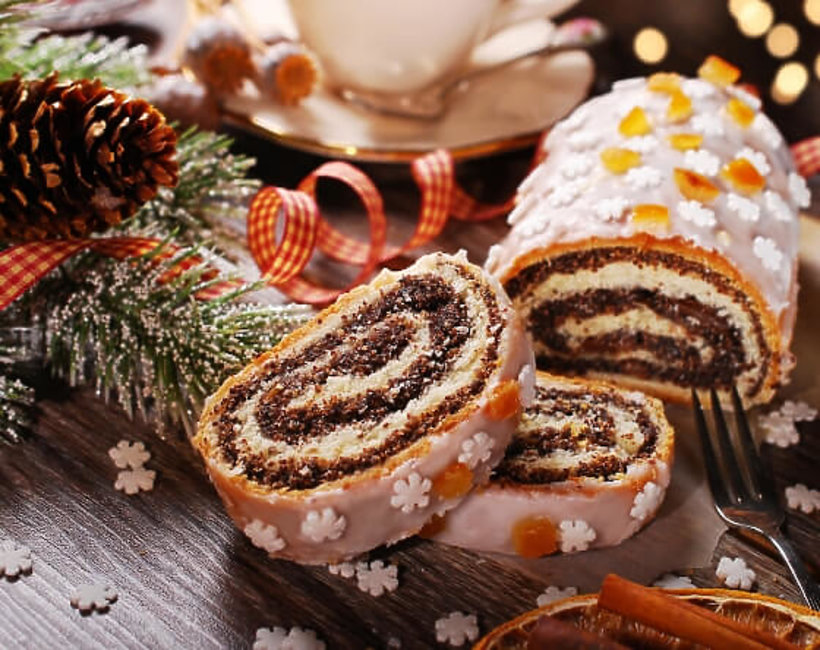
This traditional Polish treat is best depicted as poppy seed Swiss Role. Makowiec is sweet enriched yeasty dough that is rolled up with a poppy seed filling like a roulade. The filling can be made by hand by simmering the poppy seeds in milk, soaking them overnight, and then finely grinding them in a food processor. While poppy seeds are the most important ingredient, reflected in the cake’s name (“mak” means poppy in Polish), several other ingredients determine the cake’s character too. Traditionally, things like sultanas, chopped nuts, orange zest, lemon zest, and vanilla sugar are added. Poppyseed flavor combined with almond and orange notes makes the cake seem rather light to the taste. It is a wonderful thing to enjoy with a cup of coffee.
Chräbeli in Switzerland
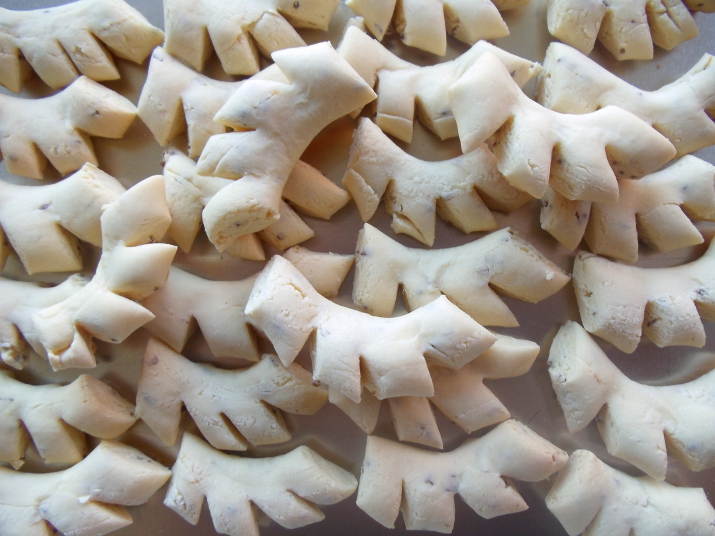
Coming from Baden, these delicate cookies have a thorny shape and get their licorice flavor from toasted anise seeds. The name is derived from a dialect word “chräbel” meaning “claws of cats, dogs, and birds.” The anise seeds, which resemble pointed feet, also add to the pointy look. For a good Chräbeli, it is best to let the prepared dough air dry at room temperature overnight before baking as it helps firm them up. Other components for the dessert are eggs, confectioner’s sugar, salt, flour, and Kirsch. One of the best things about Christmas in Switzerland is Chräbeli or aniseed cookies. Three things are needed to succeed when making them: good recipes, a little experience, and a lot of patience.
Kersttulband in Netherlands
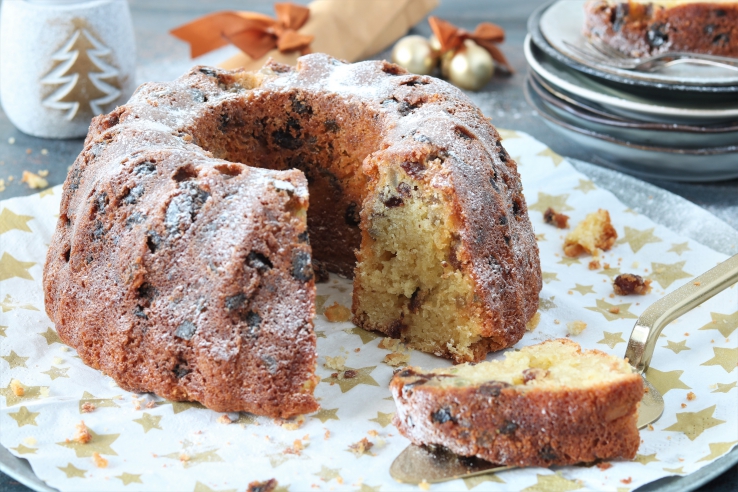
It is Christmas time, and this special time of the year is celebrated in the Netherlands with tasty food, family visits, and well, plenty more tasty food. During this time, an old-fashioned, traditional cake in the shape of a turban is baked. Usually, it is a simple pound cake, but for Christmas, it becomes a special treat. Rich with butter, sugar, and dried fruits, generous slices of this Kersttulband are often served when enjoying the visit of a friend or family member. It is good by itself and will hold, because of its richness, for several days.
Melomakarona – in Greece
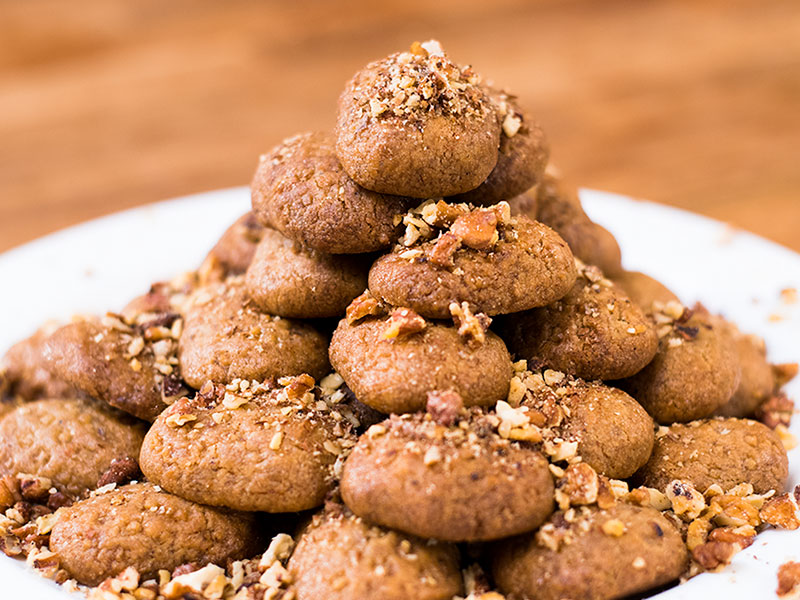
Melomakarona is one of the most beloved Greek desserts and is traditionally served at Christmastime. It is Christmas Honey Cookie — boasting spices like cinnamon and cloves — tender and crumbly, and moist from its final bath in a spiced honey syrup, similar to one that is drizzled over baklava. The name itself, Melomakarona, is a combination of the two words: “meli,” which means honey, and “makarona,” which comes from the ancient word “makaria”, meaning blessed. Melomakarona cookies are soft cake-like cookies that are scented with orange and cinnamon, soaked in honey syrup, and covered with crushed walnuts. There are many versions of these popular Greek cookies. But traditionally, they are butter-free, eggless cookies so that those who follow the Orthodox Christian fast (no dairy or eggs) can enjoy them.
Tarte au Sucre in Canada
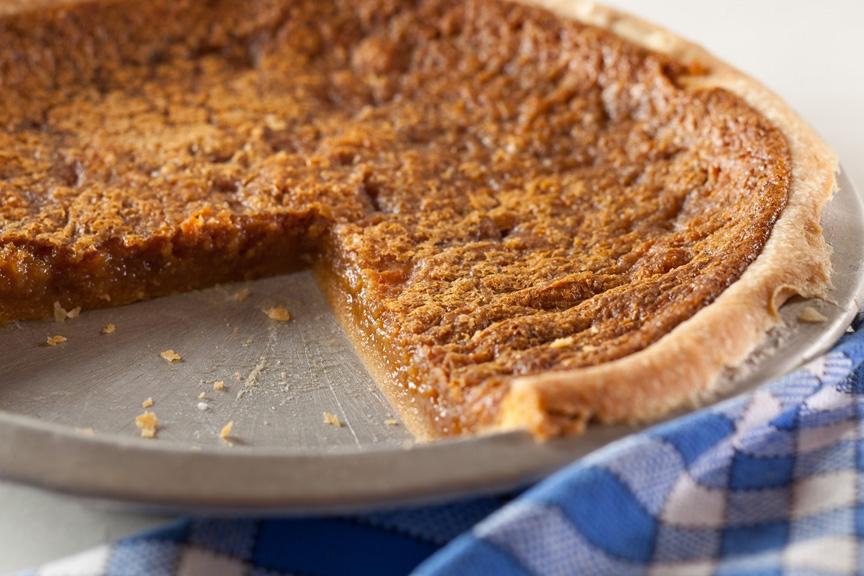
This holiday pie is a sweet tradition in Quebec, thanks to its maple-based filling. This French-Canadian dessert is believed to have emerged from a similar sweet in France or Belgium, which was carried over to North America by settlers in the townships of New France, now being modern-day Quebec. Settlers imported brown sugar and molasses from the Antilles but then discovered in the more remote areas of their new homeland that maple trees provided reliable access to sugar. In Quebec each spring, dark maple sap, which is extracted with a knife, gets harvested and shaped into sugar loaves.
Risalamande in Denmark
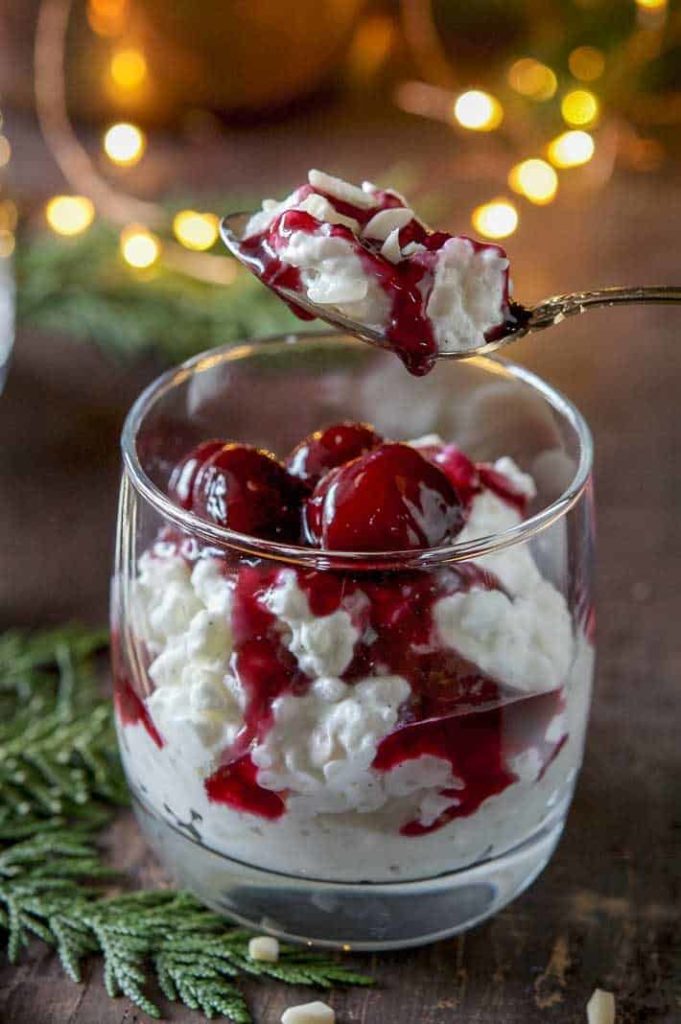
This rice pudding is what is traditionally served on Christmas Eve in Danish households. It has been a beloved dish in Denmark for centuries, a dish enjoyed by rich and poor alike. But in the 1800s, as was the case in most of Europe, there came a point when the upper-crusted bourgeoisie wanted to further distinguish themselves from the poorer, working classes and that distinction included food. But the bourgeoisie was not about to give up their beloved Risengrød. Yet to eat the common food of the poor farmers would not do either. A solution was found: They would add some luxurious items like whipped cream and almonds and then give it a new name, a French name, of course, “riz à l’amande,” to give it an air of elegance. Risalamande has remained one of the most popular of all Danish desserts ever since. It is probably the most popular Christmas dessert, served every Christmas Eve following dinner. You cook some basic rice pudding, stir in some almonds and whipped cream then top it with cherry sauce.
Pfefferkuchenhaus in Germany
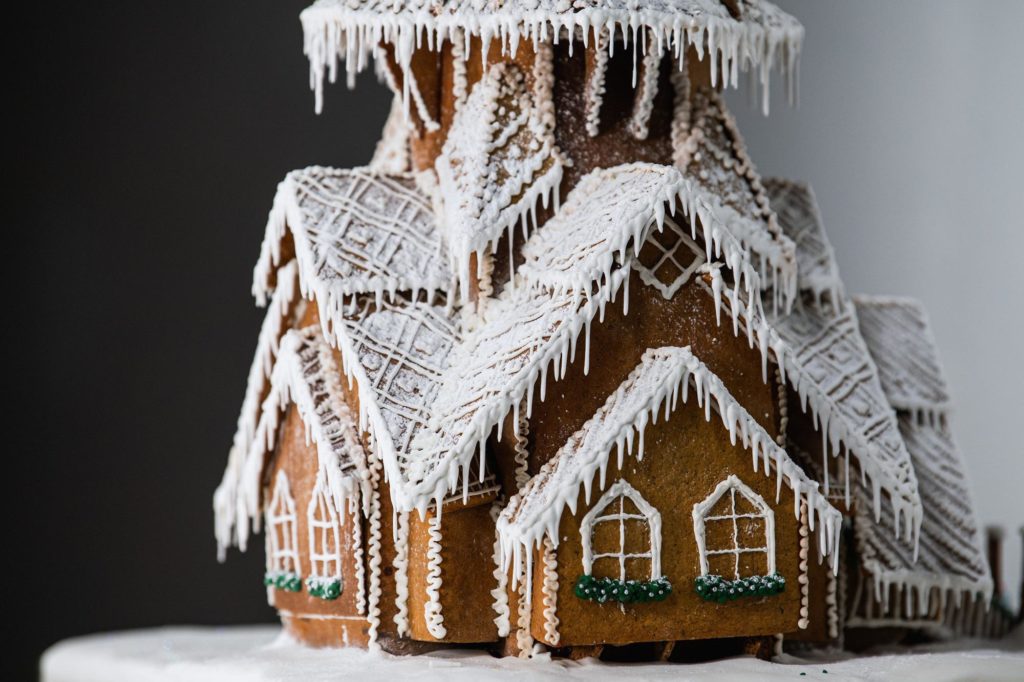
(Lebkuchenhaus or Pfefferkuchenhaus) are the German terms for a gingerbread house.) Making gingerbread houses is a Christmas tradition in many families. They are typically made before Christmas using pieces of baked gingerbread dough assembled with melted sugar. The roof ’tiles’ can consist of frosting. They are heavily decorated with all kinds of sweets, icing elements, and candies.
Pavlova in New Zeeland
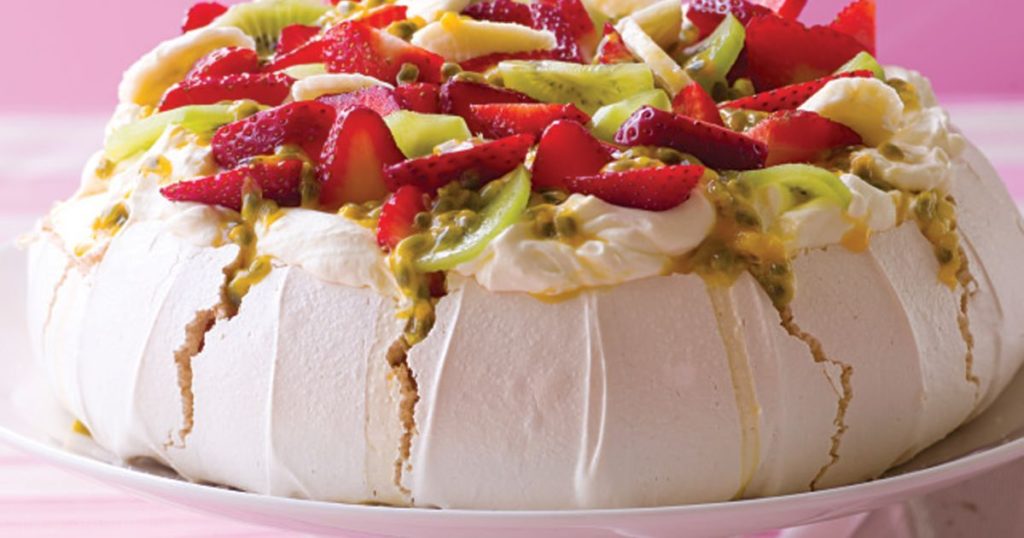
Named for the Russian ballerina Anna Pavlova, there is a debate over the possibility that pavlova was invented after or during the ballerina’s tour in New Zealand and Australia in 1926. This delicious dish is a light and airy meringue cake that is crisp on the outside and moist on the inside. Topped with whipped cream and seasonal fresh fruit, this gluten-free dessert is perfect for a hot Down Under Christmas day. New Zeeland and Australia enjoy pavlova at Christmastime and have a similar story about the desert being created by an Australian chef. In 2010, the Oxford English Dictionary settled this argument between New Zealand and Australia by listing that the Kiwis have the first recorded recipe of this dish. New Zealand’s pavlova is topped with whipped cream and kiwifruit or summer berries.
Piernik in Poland
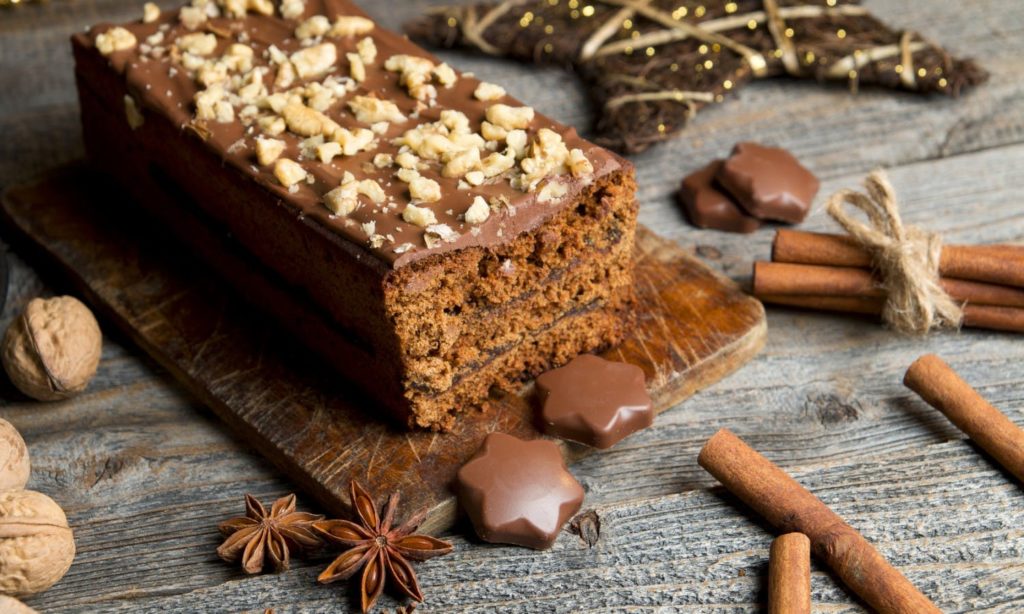
In the northern Polish city of Toruń, gingerbread cookies have been produced since the Middle Ages, thanks to the surrounding wheat fields, sources of honey, and the city’s position on the spice route from Asia, which gave them ready access to ginger. The cookies made the city famous in all of medieval Europe, but it was the Piernik, the gingerbread cake, which has become a staple in every Polish home for Christmas. Toruń bakers had their recipes for Piernik and guarded them well. Traditionally baked in a loaf tin, and then sliced and filled with plum jam. This is a taste of my childhood.
Cougnoux in Belgium
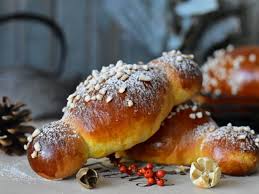
Belgians as well enjoy the delicious Bûche de Noël on Christmastime, just as the French. But they also have a very specific kind of brioche, the “Cougnoux or Cognou ” baked during the Christmas holiday. The Cougnoux, or bread of Jesus, is a sweet bread formed like a baby Jesus. It is made with flour, eggs, milk, yeast, raisins, and sugar. Typically, it is given to children on Christmas and St. Martin’s Day and is usually enjoyed with a cup of hot chocolate. It is usually decorated, quite differently across the provinces: with terracotta circles (called Rond), with incisions in Cambraisis, elsewhere it is with flowers, sugar…
Panetón In Peru
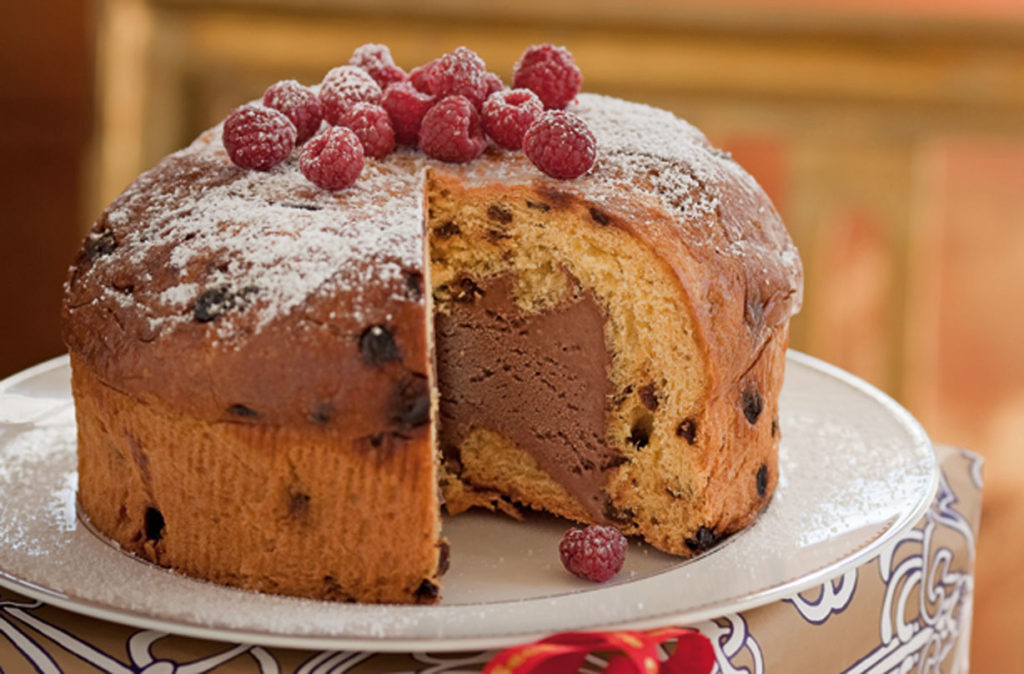
Having a slice of what was originally Italy’s panettone is Peruvian Christmas tradition. Italians were among the earliest Europeans to come to Peru in the 16th century, and the 19th century saw several more waves of Italian immigrants arriving in the country. Pietro D’Onofrio, an Italian immigrant who brought over the recipe for panettone, built a baking and ice cream empire within Peru. A commercialized treat, Panetón reflects the traditional Italian version but also has its interpretations; there is one made with chocolate called Chocotón.
Beigli in Hungary
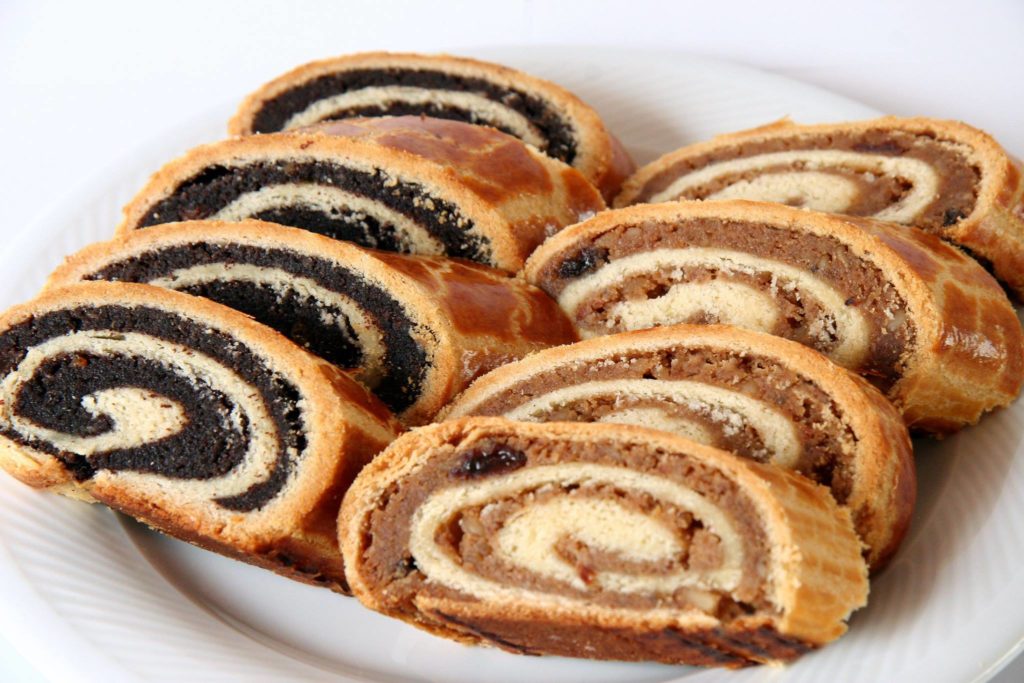
This sugary, roll-shaped pastry with a dense, swirly filling of poppy seeds or walnuts is a Christmas treat in Hungary. A German-Yiddish word meaning horseshoe or “to bend,” Beigli dates back to old folk traditions in which both poppy seeds and walnuts had their symbolic significance: walnut provided protection against magic spells or curses, while poppy seeds, imported by the Ottomans, meant prosperity. The universal Christmas treat as it is known today came to Hungary in the second half of the 19th century, during the Austro-Hungarian Empire. Initially baked only in the home as a family ritual, beigli eventually spread to cukrászdas or confectionaries.
Lokum in Turkey
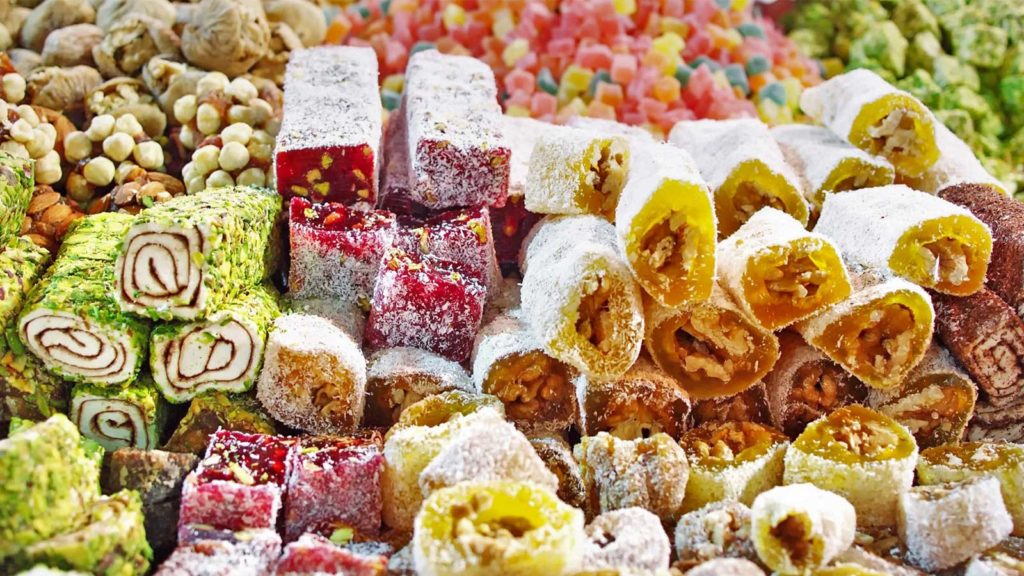
Turks celebrate what they call “Noel” on New Year’s Eve and also decorate trees and exchange gifts with loved ones. Although Christmas is just a regular day here in Turkey, you can celebrate your Christmas time there in Turkey, a country that holds great significance in the history of Christianity, and enjoy the famous Turkish delight – the Lokum! In cosmopolitan areas especially, streets and shopping centers are decked out in stunning Christmas decorations, and you may even spot a Santa or two. It is a family of confections based on a gel of starch and sugar. Premium varieties consist largely of chopped dates, pistachios, and hazelnuts or walnuts bound by the gel. They are just delicious!
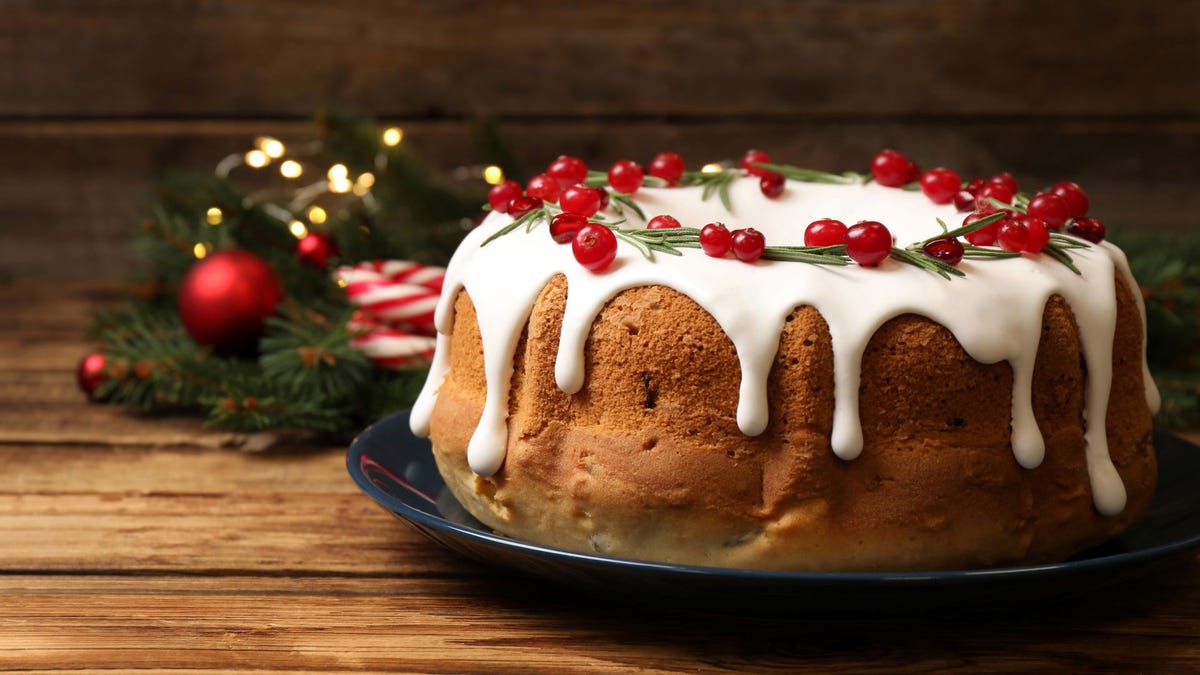
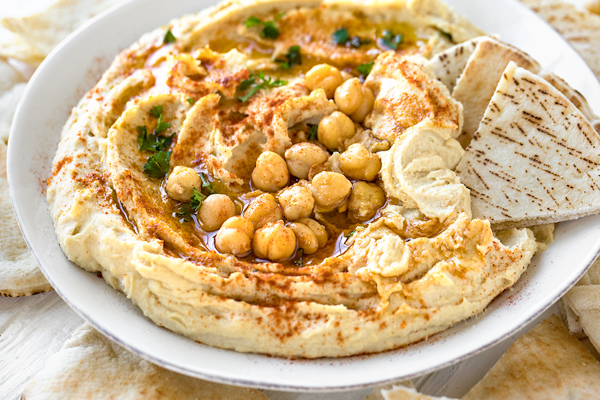
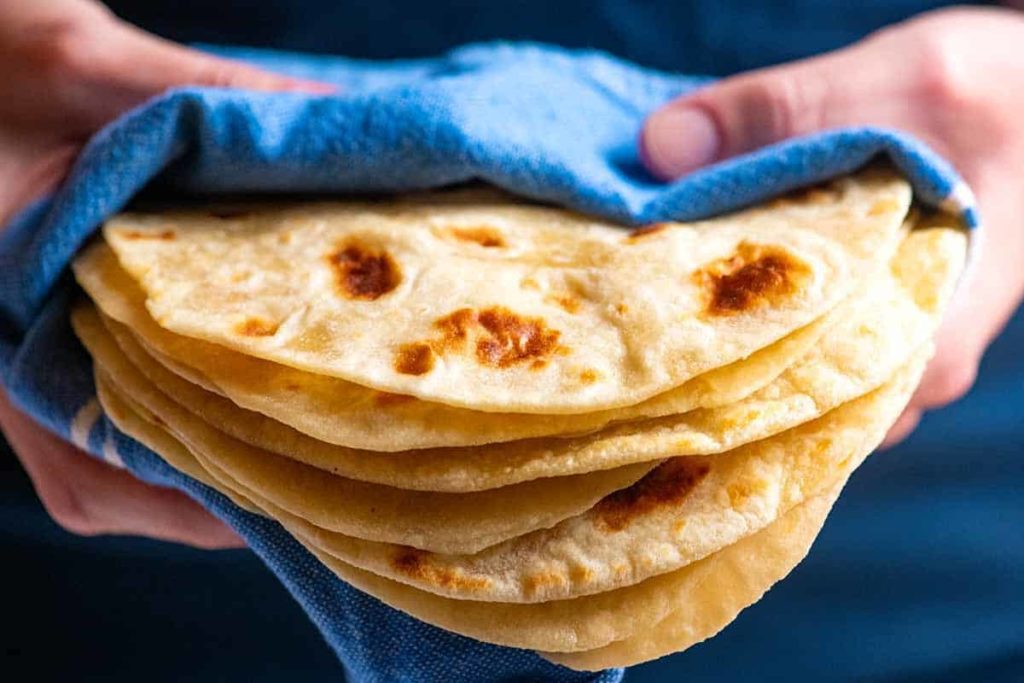

Very nice and well described post.
So many raisins. I like the Japan one and Bibingka looks really good